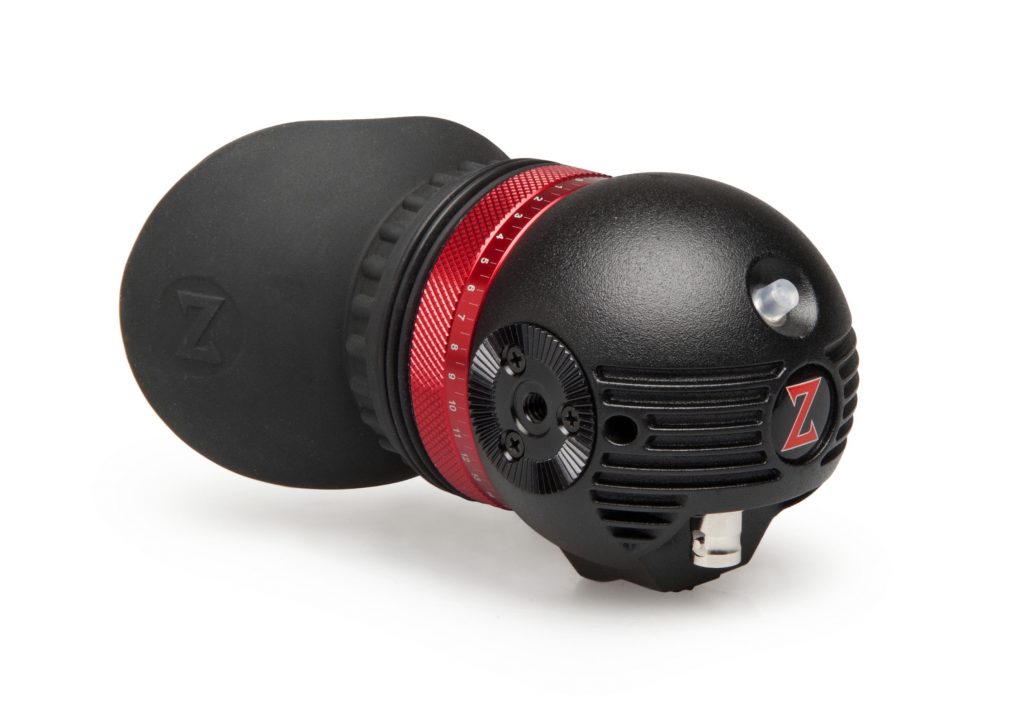A great viewfinder is like great cinematography, it doesn’t draw attention itself. As camera operators we do not ask for much. We want something bright, easy to judge focus, and full of helpful features. Thankfully, Zacuto just added the small-sized Gratical Eye to their EVF line. I was able to use the Eye over a weekend recently. This was enough time to ground my thoughts about the brand new EVF.
The Eye Means Three
With the introduction of the Gratical Eye Zacuto has a family of EVFs on their hands. First they introduced the Gratical HD, then the less expensive Gratical X, and now they have the Gratical Eye. In this case, three is not a crowd. Each and every one of these EVFs are priced well considering how many features you receive. The big differences between these three models is the Eye only has a single SDI input and 2 pin Lemo power supply whereas the Gratical HD and X feature both HDMI and SDI plus loop-throughs and use Canon batteries.
Small Size, Big On Features
The size is what I love about the Eye. The smaller size means the EVF won’t get in the way of operating a smaller camera. More than its size, the large set of features packed into the EVF was surprising. Not only does the viewfinder have a very useful joystick style button, but once you use a single joystick it makes way more sense than three or more separate buttons. It’s a funny thing, but toggling a joystick to find the right setting is way easier, and requires less thought, than trying to remember where the correct button is located.
Micro-OLED Display
Lovely blacks and bright whites are all I ask and the Eye delivers. The OLED screen measures 0.61 inches diagonally with a full display size of 1280 x 1024. This is one clear EVF with color bit depth at 24 bit RGB. With a screen as sharp and bright as the Eye’s your footage might look best in the EVF instead of on screen.
Multi Level Intense Focus Assist Peaking
First, helluva a title for a feature. Kudos to Zacuto. Second, I literally stumbled into finding the “multi level intense focus assist peaking” and label me impressed. It was the kind of peaking where you very easily nail focus but not too much of an effect to the picture. What I found interesting was the ability to dial the peaking intensity level to your desire.
LUTs
This EVF was fully loaded with LUTs. So many LUTs I didn’t have the time to test them all out. I was shooting on a 4.6K Blackmagic URSA Mini when I was testing the Eye. At the time, the EVF wasn’t loaded with Blackmagic’s newest LUT to accompany the camera. So I tried a few different options. S-log 3, Arri Log-C, and so on. Since I was pretty deep into testing the 4.6K URSA Mini, you can read the review here, I knew the camera matched up decently with Arri’s Log-C LUT. This EVF, the Arri Log-C LUT, and a 4.6K Blackmagic URSA Mini are a treat when combined. The footage and the overall shooting experience was fantastic. Actually, I was enjoying myself so much I shot a little video to show off shooting on the 4.6K Blackmagic URSA Mini while monitoring through the Gractical Eye set to Arri’s Log-C LUT.
Usability
The Eye is easy to use and easy to forgot its there. When I shoot, I want the EVF to be an extension of what I see with the camera. I want to see the necessary information, waveform and vectroscope, but I don’t want the information to get in the way. With the Eye the information is below the image which is where is should be. The diopter was smooth and didn’t drift and the eye cup, and accompany cover, did not let in any light helping me to focus exclusively on what I was shooting.
Is this a better option over Zacuto’s other EVFs? If size is an issue and you want something small then the Eye is the EVF for you. The Eye could be one of the better more inexpensive alternatives to the Panasonic Varicam LT’s $5400 EVF, Red’s Bomb EVF or Sony’s Fs7, F5, and F55 EVFs. While the Eye may be more expensive than Blackmagic’s EVF the Eye can be used on many different cameras and has way more features so I think the cost more than justifies itself. The one thing to remember is the Eye needs power via its 2-pin Lemo Power Jack. Zacuto includes a 2-pin Lemo to P-Tap adapter cord with the viewfinder. With power in mind I see this EVF more dedicated to larger cameras and the power supply to support them. The size, shape, and power drawn from the camera means the Gratical Eye will feel comfortable on any SDI capable camera.
Features
- Custom Scaling/User Presets
- Color Processing – RGD, saturation, brightness, contrast
- Zebra Stripes – customize width, color, thresholds
- Four programmable buttons (north, south, east, west on the joystick)
- Vectroscope
- Waveform (3D)
- Histogram (RGB, Luma)
- Audio Meters
- LUT Import, create & editing
- Proximity Screen Saver
- Red Line Peaking (Multi-color)
- False Color
- Frame Store (with transparent overlay)
- Test Pattern (color bars & Macbeth)
- Outboard Tally Light
- Multi level intense focus assist peaking
- Frame Rates
- 23.98p, 23.98PsF, 24p, 24PsF, 25p, 25PsF, 29.97PsF, 30 PsF, 50i, 50p, 59.94i, 60i, 60p
- 23.98p, 23.98PsF, 24p, 24PsF, 25p, 25PsF, 29.97PsF, 30 PsF, 50i, 50p, 59.94i, 60i, 60p

